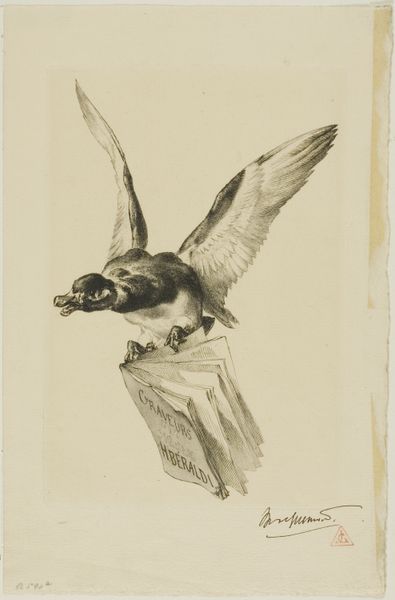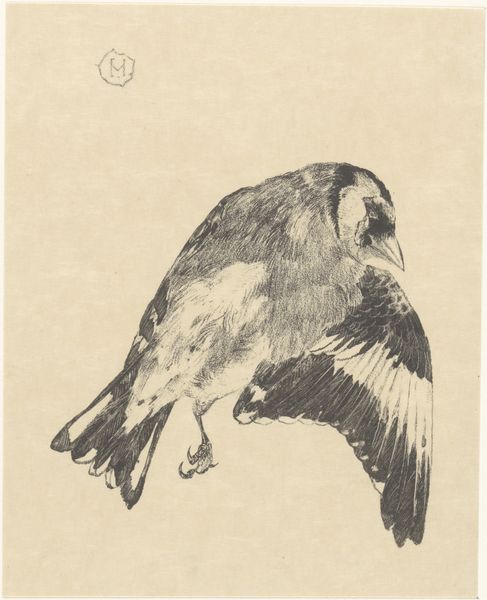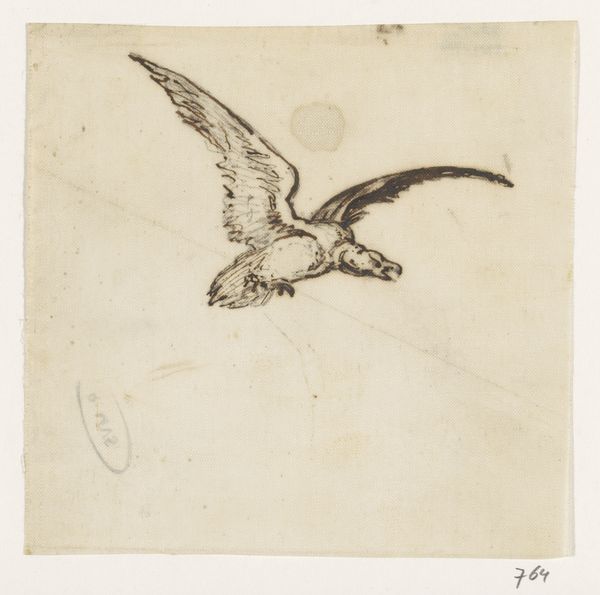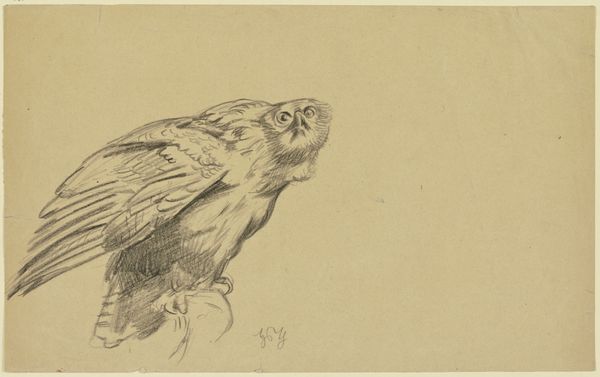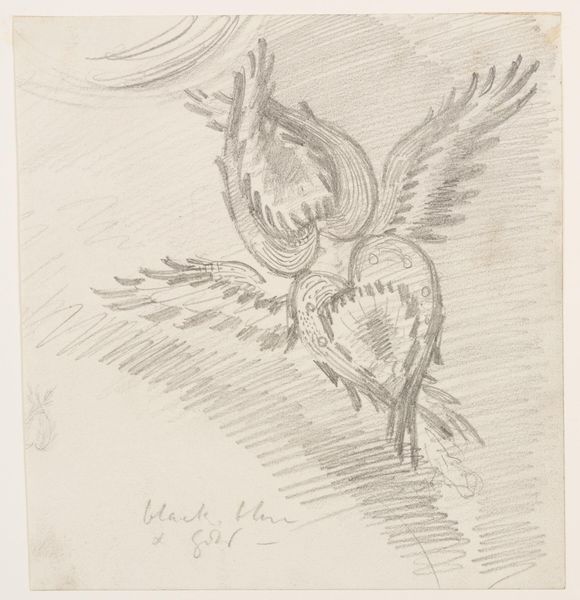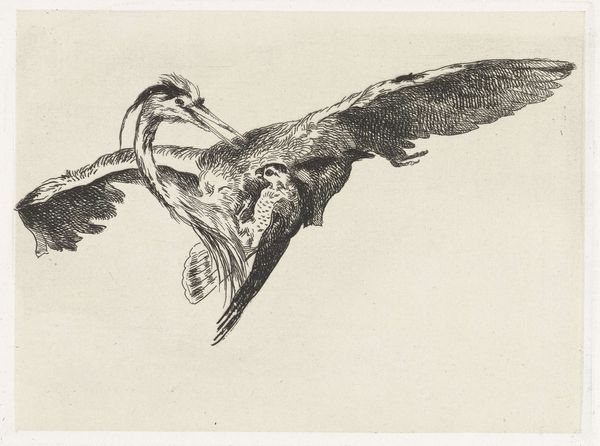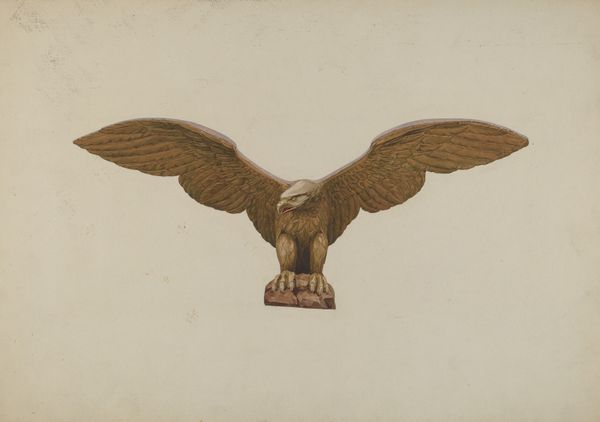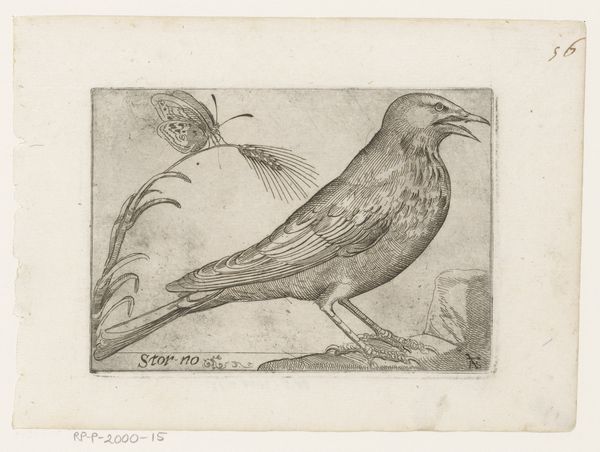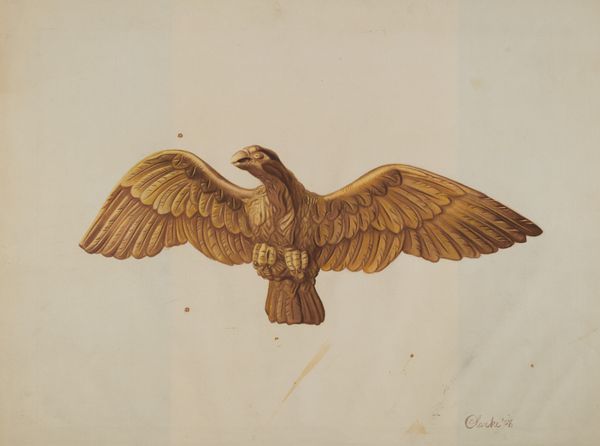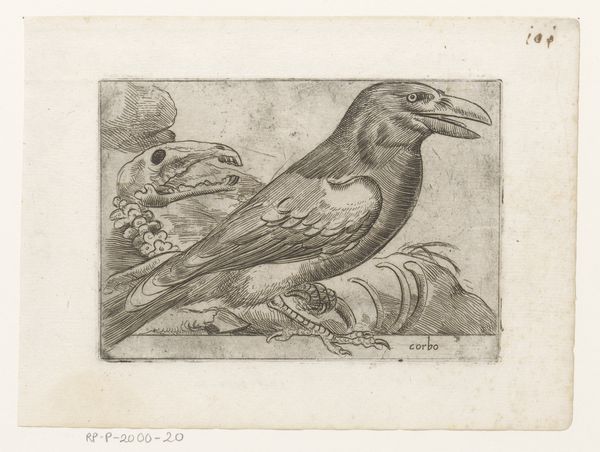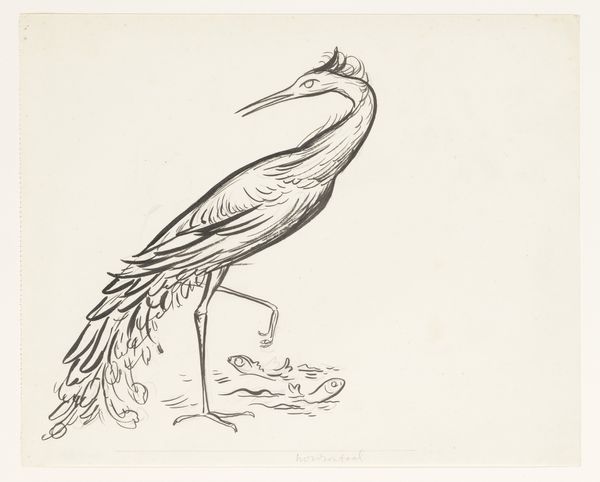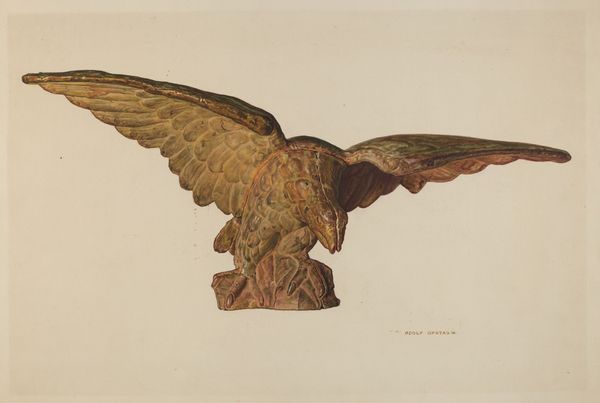
drawing, paper, ink
#
drawing
#
landscape
#
figuration
#
paper
#
ink
#
pencil drawing
#
line
Dimensions: 6 3/8 x 6 13/16 in. (16.19 x 17.3 cm)
Copyright: Public Domain
Curator: Félix Bracquemond's "Bird (Crow)," rendered in ink on paper, greets us. It's dated September 19, 1852, and has such a striking, vulnerable presence, don't you think? Editor: My immediate reaction is how effectively he captures the tension. The wings are spread, yes, but it seems poised, frozen mid-action rather than soaring freely. There is a latent energy but not released. Curator: That feeling of suspension certainly taps into the symbolism of crows. They're often seen as messengers, bridging worlds, hovering between the known and unknown. That slight tilt of the head… it feels like contemplation. The artist does such good work capturing emotional and intellectual weight. Editor: It's intriguing, that duality. In 1852, Romanticism still held sway. A crow is interesting, of course, for the Gothic aspects as an image. You've got something here that engages the period fascination with mortality but is simultaneously detached. It's an incredibly clinical depiction that feels scientific in purpose, more like an ornithological plate than anything allegorical. Curator: I think it speaks to both, and it shows us that Romanticism contained different trajectories. Bracquemond's keen observation lends a sense of realism but the very choice of a crow—its connotations—injects that symbolic layer. Editor: How do you see the role of this drawing within the context of artistic training during that time? It strikes me that this would have been invaluable when producing studies for grander, historical subjects where close observation of the natural world was a must to capture truth. Curator: Absolutely, and this work stands as a testament to the power of that foundational approach, a powerful reminder of seeing beyond the surface. Even in its simple beauty, we feel its many depths. Editor: Agreed. The drawing prompts questions that take us beyond its straightforward subject—that opens into history. Its simplicity becomes profoundly engaging.
Comments
minneapolisinstituteofart almost 2 years ago
⋮
Unwilling to take any chances with his etched masterpiece The Upper Part of a Door Panel (Mia P.1,809), Bracquemond prepared a detailed drawing for the crow featured in the upper left. Because Mia’s study matches the etched version so closely, it was most likely the final model for the print. Bracquemond made this work when he was nineteen years old. He expressed his pleasure in it with an elegant monogram and the precise date, “19 Septembre 1852.”
Join the conversation
Join millions of artists and users on Artera today and experience the ultimate creative platform.
